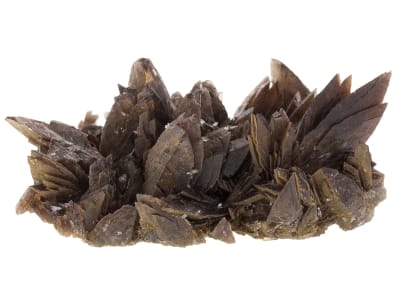Ferroaxinite is the iron rich variety of axinite. Crystals are flat and resemble an axe head. It was originally named Espéce de Schorl in 1781 but it was renamed axinit in 1797 due to its axe like structure. In 1909 the name was revised to acknowledge the presence of iron in the chemical formula. It can be found in granite and other igneous rocks. Crystals can be brown, clove-brown, plum blue or pearl gray and are strongly trichroic. The crystals typically show internal characteristics like fractures. It can be pyroelectric and piezoelectric. Notable specimens come from France, California, and the Russian Federation.
General Information
LWUV: None
Ferroaxinite Colors
-
 Blue
Blue -
 Brown
Brown -
 Gray
Gray
Alternate Names
Axinite-(Fe)
Countries of Origin
Russian Federation; Czechia; United States of America; United Kingdom of Great Britain and Northern Ireland; Portugal; Austria; Sweden; Pakistan; Morocco; Unknown; China; Brazil; Poland; Slovakia; Chile; France; Iran (Islamic Republic of); Hungary; Japan; Switzerland; Spain; New Zealand; Canada; Norway; Namibia; Finland; Italy; Mexico; South Africa; Australia; Peru; Germany
Care
Ferroaxinite is brittle so take care when handling.
